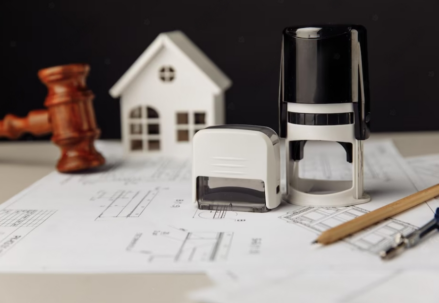When you own a house, there’s often curiosity about the criteria that define a property as a ‘compound’ and what distinguishes it in the realm of real estate.
A real estate compound encompasses several residences situated on either a solitary land parcel or adjoining pieces of land. Compounds frequently originate from families jointly purchasing land or constructing multiple structures on a unified land tract. Typically, these compounds feature a solitary gate or entrance, although the possibility of multiple entry points exists.
The regulations regarding land usage in your locality can play a pivotal role in dictating the permissible activities within your compound and shaping its structural layout.
What Defines a Real Estate Property Compound?
A property compound refers to a scenario where multiple residences share a common piece of land. A compound doesn’t simply pertain to a single house; rather, it necessitates the presence of multiple houses situated on a unified property.
Key Aspects of a Property Compound:
- Multiple Residences – A property compound consists of several distinct houses coexisting on a singular property;
- Diverse Property Types – Within a compound, one can encounter various property types like apartments, townhouses, or villas;
- Shared Grounds – In a compound setting, numerous houses often share the same expanse of land.
- Adjacent Homes on Separate Parcels – Some compounds encompass adjacent homes and lots, each occupying separate parcels of land;
- Conjoined Buildings with Purpose – The core of a compound might comprise individual buildings that are interconnected with a specific purpose. Alternately, certain compounds blend houses together, resembling an apartment complex;
- Unified or Joint Entrance – Typically, a compound features either a singular entrance or a gate that encircles all the structures. This entrance could encompass a centralized security system for the entire area or a series of gates facilitating ingress and egress;
- In-Compound Amenities – Certain compounds boast amenities embedded within their confines, such as shopping facilities, gyms, pools, and other conveniences situated within the vicinity of the compound.
In contemporary times, certain individuals opt to establish compounds by acquiring properties adjacent to their own residences. Their intention is to create a buffer zone, demarcating their home from neighboring properties.
On occasion, the creation of a compound can be driven by environmental considerations. For instance, a cluster of beach cottages might be strategically positioned on a single tract of land to mitigate any adverse environmental effects on the land or its surroundings.

Family Compounds: An Overview
Numerous compounds come into existence as families acquire land in close proximity to one another. In certain instances, grandparents might opt to live adjacent to their grown children and their respective families, resulting in the creation of a family compound.
Alternatively, individuals might choose to construct a residence for their aging parents on their own property, effectively establishing a compound within their premises.
Illustrating this concept is the Kennedy Family, who possess a compound featuring multiple distinct houses situated on adjoining plots. While each house maintains its separate identity, they are interconnected within a singular compound or designated space.
Compounds Fostering Work-Life Balance
Certain individuals establish compounds that promote a harmonious integration of their personal and professional lives. This could involve a residence featuring a distinct office space, which might be a converted garage, effectively encapsulating a work-life balance within the same environment. Additionally, the concept of a compound extends to the arrangement of two separate structures conjoined for a specific purpose.
In essence, a compound comes into play when a property accommodates more than one habitable building, thereby defining it as a compound. Numerous such compounds are designed to facilitate the coexistence of living and working spaces within a unified location.
Zoning Considerations and the Complexities of Compounds
The intricacy surrounding the establishment of a compound becomes apparent when one realizes that creating a compound involves more than merely constructing a building in one’s backyard and designating it as such. The regulatory framework of zoning regulations can pose challenges to various types of compounds.
Numerous regions impose limitations on the structures present on a given building site. For instance, zoning ordinances might dictate that a property can only host a single residence, alongside a separate pool house. It’s worth noting that such regulations often specify that the pool house should lack facilities like kitchens or bedrooms.
To navigate around these zoning constraints, individuals often resort to acquiring adjacent parcels of land while keeping them distinct. This strategic approach aligns with zoning laws that permit the construction of a residential structure on each separate property, effectively circumventing the restrictions in place.
Challenges When Selling a Compound Property
One of the complexities associated with compound properties is the potential difficulty in selling such properties. In cases where a family compound features a singular entrance, prospective buyers might hesitate due to concerns about integrating into the existing familial environment, leading to a perpetual sense of being an outsider.
Furthermore, the presence of non-family members within a family compound could generate resentment among other family members, creating a pre-existing tension against the new occupants.

While the concept of a compound can prove highly advantageous when all elements align harmoniously, challenges can emerge when it fails to function as intended. For instance, if family dynamics are strained or communication among members breaks down, the experience of living in a compound can become extremely arduous. This, in turn, can complicate the process of selling the property, as potential buyers may be wary of involving themselves in familial conflicts.
Therefore, before embarking on the decision to establish a compound, a thorough examination of local zoning regulations and a comprehensive assessment of future resale potential are imperative. What may appear as a promising investment in the present could transform into a significant predicament down the line, especially if the context involves a family-oriented compound.
FAQ
A real estate compound encompasses a property or contiguous parcels of land hosting multiple residences. It is characterized by the presence of numerous homes or living units constructed on a single property or distributed across adjoining land plots.
Compounds deviate from traditional residential properties as they encompass multiple dwellings situated on a single property or adjoining land lots. Often involving families or individuals in collective ownership or construction endeavors within the compound.
Families opt to purchase land collectively and build within a compound to nurture a communal atmosphere, establish shared spaces, and achieve proximity to relatives or friends. This facilitates close living arrangements while upholding individual living areas.
Certainly, a compound can boast multiple proprietors. Each proprietor generally holds ownership rights over their distinct residence or property within the compound.
Compounds can be encountered across various regions and nations, yet they are more prevalent within cultures or countries that value extended family or communal living arrangements.
The regulations governing inhabitants within a compound can diverge. Some instances might involve shared responsibilities for upkeep, communal zones, or shared amenities. Typically, residents or a relevant association establish specific regulations
Compounds can encompass gated communities, but not all compounds possess gates. While some compounds feature a sole entrance or gate, others might offer multiple access points or remain accessible to the public.
Residing within a real estate compound offers several benefits, including a sense of community, communal facilities or services, heightened security, amplified social engagement, and opportunities for multigenerational cohabitation.
Relevant Inquiries
Who Possesses Entry Rights to Your Property Without Consent?
Government entities such as the police have the authority to enter your property without obtaining your permission. In the case of renters, landlords hold the right to enter your property as outlined in the rental agreement. Certain government bodies, such as Child Protective Services (CPS), might conduct unscheduled visits to your residence. Moreover, if you have a utility easement, the associated company is permitted to access your property in accordance with the terms of the easement.
How Does Personal Property Differ from Private Property?
Within legal contexts, personal property pertains to movable possessions. Put differently, items like cars fall under the category of personal property. Conversely, private property encompasses any property not under the ownership of governmental, municipal, county, or federal entities.
Conclusion
The term “compound” in the realm of real estate encapsulates more than mere physical proximity. It signifies a harmonious integration of living spaces, where houses and properties converge to create a unified environment. The criteria for identifying a house and its property as a compound involve multiple dwellings coexisting within a shared space, often belonging to a single family or group. The concept of a compound brings forth opportunities for enhanced community, shared amenities, and intergenerational living. However, navigating zoning regulations, potential resale challenges, and familial dynamics is crucial in ensuring the successful establishment and maintenance of a compound.




